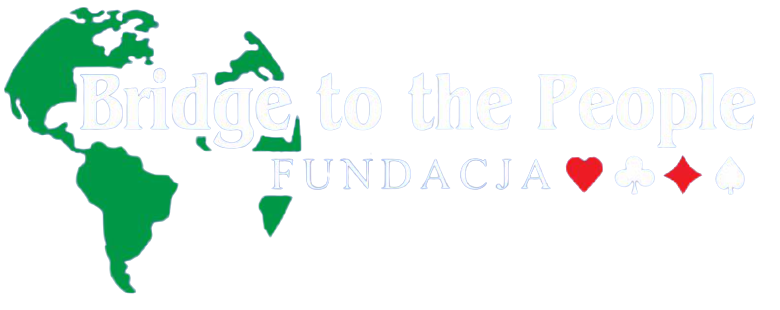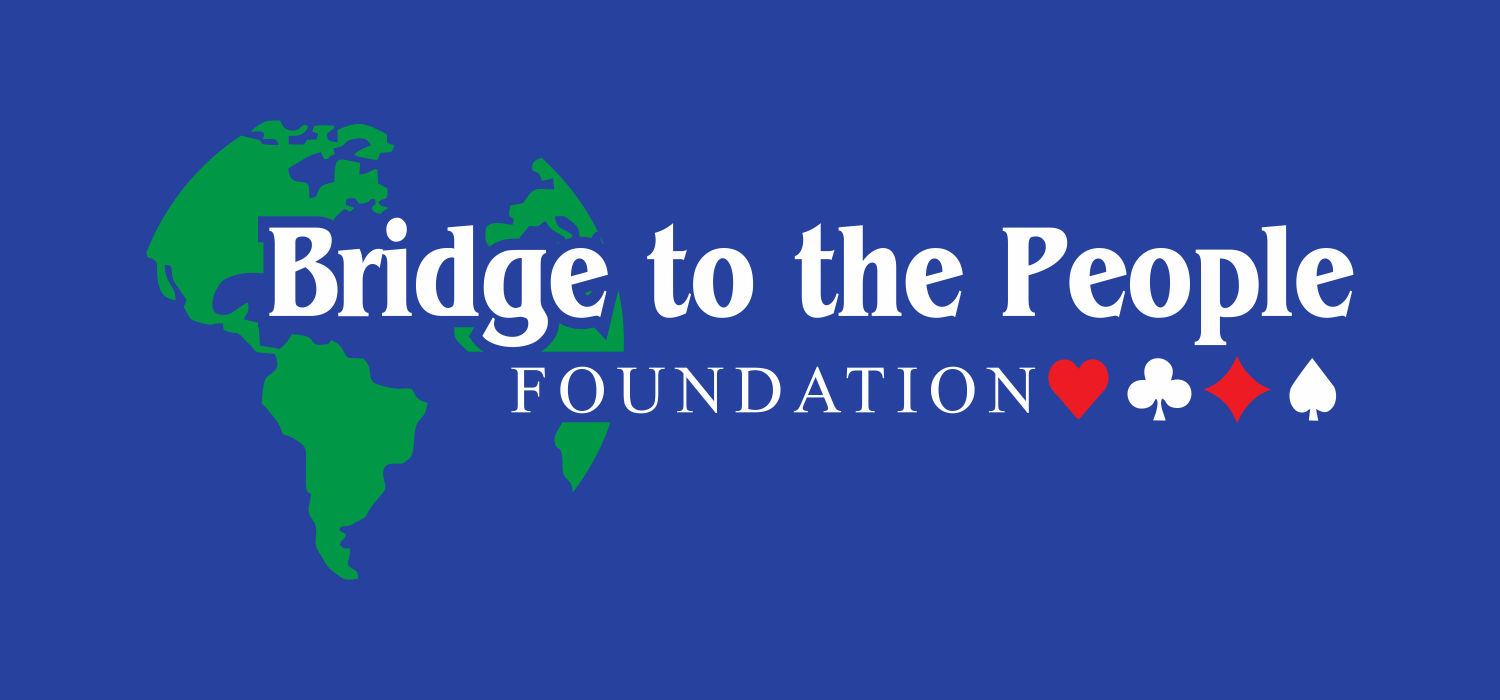[gtranslate]
Bridge – an avalanche of pleasure
“The course showed me how much bridge has changed, or rather – how different bridge was played years ago. A different, or ‘circle’ bridge. It also showed that a new one can be learned at any age. And so the avalanche of pleasure began.” MałgorzataMaruszkin
Bridge is back like James Bond. As exciting as ever, albeit slightly altered. As engaging as ever.
It is said that bridge begins when “the only genius at the table joins forces with the idiot from the opposite to beat the cheater on the left and the liar on the right”. There’s that Bond again (also a bridge player)…
It can happen, but mostly it is about enjoying (and often even benefiting) from the
gymnastics of the mind. Bridge can be played at any age (at tournaments you can see players in their -teens and -tees) – the game unites generations, is a great workout for the brain, facilitates integration, allows to meet new, interesting people, overcomes barriers of fitness and disability, unites representatives of all professions, is an international “language”… I could go on and on.
I myself returned to bridge after a break of many years, when I found the time to relive an old hobby. Although hobby may be an understatement, as bridge is a real passion, sometimes addictive.
I came across information about bridge courses for 60plus people,
organised in Warsaw’s Ursynów district, in beginner and advanced versions.
The whole action was initiated by Marek Małysa PhD, the good spirit of bridge.
MałgorzataMaruszkin: Where did the idea for Bridge60plus come from?
Marek Małysa: I read that scientific research shows that playing bridge
reduces the risk of Alzheimer’s disease by as much as 75%. Later, in the USA, I witnessed the signing of an agreement between the local bridge federation and the Alzheimer’s Association. I thought there was something in it, did some research and came up with the idea.
– What were the beginnings like?
– Funds were needed to equip the centres, so I started looking for sponsors. And I found them. Next was a website, Facebook, encouraging friends… Somehow it went well.
– What is it like now?
– Now, three years on, I’ve created 340 centres across the country. Several thousand people play in them. Unfortunately, support is only offered by the Ministry of Labour and Social Policy and the PZU Foundation. Local governments either don’t want to help, or they don’t know about the campaign, and I am alone.
I think that local funding is already an issue for the centres One of them managed to get such funding.
– And the achievements of senior Poles?
– For years, our senior bridge players (60+) have been top of the world. Masses of medals and titles. There is much to boast about.
– Have you established contacts with other countries?
– I have ‘introduced’ the programme to 23 European countries. It doesn’t work everywhere like it does here, but…
Thanks to the interest in the project on the part of the bridge world governing body, I have the chance to promote it on other continents, not only in Europe.
I have the opportunity to promote it on other continents, not only in Europe. I have
Hopefully successfully.
– What are your plans?
– North America, Australia and Asia remain to be taken. Seriously, I would like to create a bridge club from each centre, I would like to create a bridge club as an animator of activity for people in the ‘post-working age’.
It’s a need of the hour, but I can’t do it alone and there are no people willing to help me at central level.
Interest in the course was huge. Beginners and advanced came – aged60plus or so. Someone said that after the death of his wife he hadn’t moved between people for five years,so this bridge is a salutary incentive for him to get out of the house. Another – that his wife has otherinterests, she goes to her classes, he goes to the course. Another person was worried that he would notfind a place among the better players. Her fears were quickly dispelled: the atmosphere is friendly and the excitement, although sometimes extreme, only makes the blood flow faster and the adrenaline rush.
At first, we only played at the NOK club, then we startedparticipating in tournaments.
The course showed me how much bridge has changed, or rather, how different bridge was to us years ago.A different, or ‘circle’ bridge. It also showed me that you can learn new things at any age. And so the avalanche of pleasures began.
The pleasures are on the one hand, and on the other, my interest in bridge is growing. In
April, at the Nicolaus Copernicus University, an internationalconference, where bridge was one of the topics. I went to Toruń andlearnt a great deal and, in addition, I met the greats of Polish world bridge,actively participating in the deliberations. I myself limited myself to listening, although when one of thespeakers said that bridge was unspectacular and monotonous, I couldn’t stand it. Ifthe comments(sometimes loud) “Learn to distinguish the cards first and then sit downor “Don’t you know how to bid? Last time I played with you!” (not true, as it turns outturns out…) or the biting “And where did those cards you were bidding with go?” after theGrandpa’s hand, as well as the comments of a garland of feverish supporters “After all, itcould have been won!” or “A sensational game!” are indicative of boredom, then I want to be sobored. But that’s in the margin.
On the other margin, more about bridge, connecting generations, helping to avoid isolation,
loneliness. One of the lecturers leading the course, Piotr Dybicz, an outstanding bridge player,coach of the Polish national team, academic (bridge section…) and high school teacher (bridge classes…),told me about a study which showed that students in mathematics and bridge classes achieve the best results, within about two years closing the previous gap andbeating the students of computer science classes who were better “at the start”. It cannot be ruled out thatthe game will enter schools – on a wider scale (hopefully!), as maths and bridge classes are alreadyare already operating, e.g. in Krakow and Warsaw.
He also told me that at tournaments he saw parent-child pairs, but also grandparents-child pairs.
One of the players preferred to stand at a table because when he sat down, he couldn’t reach thefloor and could not really see the cards. He was six years old, but he was already playing. This is not a fairy tale, as recently frombridge referee Roman Kowalewicz I heard that one of the current Polish championsas a four-year-old child watched his parents play, commenting, “What are you playing, Daddy…”. Ispoke as he should. Well, but he’s a genius.
Born in Riga in 1909, American bridge player Boris Schapiro, who died in
2002, won his last World Championship title when he was 89 years old. Known for his sense of humour, Schapiroonce bet £50, claiming that his bridge partner Terence Reese was so
focused on the game that he wouldn’t even notice if a naked woman appeared next to him.
He arranged the appropriate situation and won the bet….
There are well-known opinions of scientists (usually bridge players at the same time) that bridge not only perfectlyexercises the grey matter, teaches logical thinking, helps to control emotions, but also has a unique significance in thealso has a unique significance in the formation of social attitudes and interpersonal relations, it brings generations together.
It requires interaction with a partner, not fighting with him, it develops tolerance for stumbling, improves memory and the ability to analyse. Benefits alone. Anyone can learn.
and of any age. There are no movement restrictions, deaf and blind people can play.
You can play in the Internet (allows you to train, although in my opinion this is not the same as playing face-to-face).
The results of studies of bridge players and non-bridge players show that bridge players perform betterin measures of memory and logical thinking.
On the course I also met people who did not distinguish spades from hearts, and after a few weeks they weeks they were already playing. Gradually they got better and better, incorporating more daring calls and plays, learning, learning and learning. Because bridge requires training and learning, reading books, watching games (although the spectator must be quiet!), analysing hands and bidding to avoid mistakes in the next round. the next round. It is not a challenge to be faced, but an inner need that arises over time.
In 1958, the World Bridge Federation was founded. Since 1960, every four years
the Brydon Olympiads have been held, and since 2000 the senior category has been recognised in the Olympiads.
There are probably many who want to learn about this wonderful game, read about the bridge world (or rather – a huge world: when Poles were asked if they played/are familiar with bridge, one in ten answered in the affirmative!) and learn something more.
The Polish Association of Sports Bridge has just turned 60. It has 6500 members
associated in 16 Provincial Associations of Sports Bridge. Our players have won the titles of World Champions more than 170 times. In addition to descriptions of interesting hands and tactics, in some bridge books we find stories that happened at the bridge table (up to and including murder…), examples of different behaviours (every country has its customs), but also unusual games (with an explanations of their uncommonness). Among the bridge players we come across many famous people (Woody Allen, Omar Sharif, Gustav Holoubek, Winston Churchill, Bill Gates, Martina Navratilova…). I know stories of prisoners of war who survived because they occupied their minds with bridge, there are experiences of political prisoners playing bridge with dominoes, engaging in ‘criminal’ games… There are love stories (the father of bridge player Ely Culbertson met the future Mrs Culbertson at the green table and initially related to her with great reluctance, it was only her masterful play that made him lose his head for her).
I don’t know who among those reading this text plays bridge and who has yet to have the pleasure. pleasure. I play and I strongly encourage others to do so.
Poland is a bridge powerhouse, and I encourage you to take a closer look at this powerhouse.
Author: MałgorzataMaruszkin

